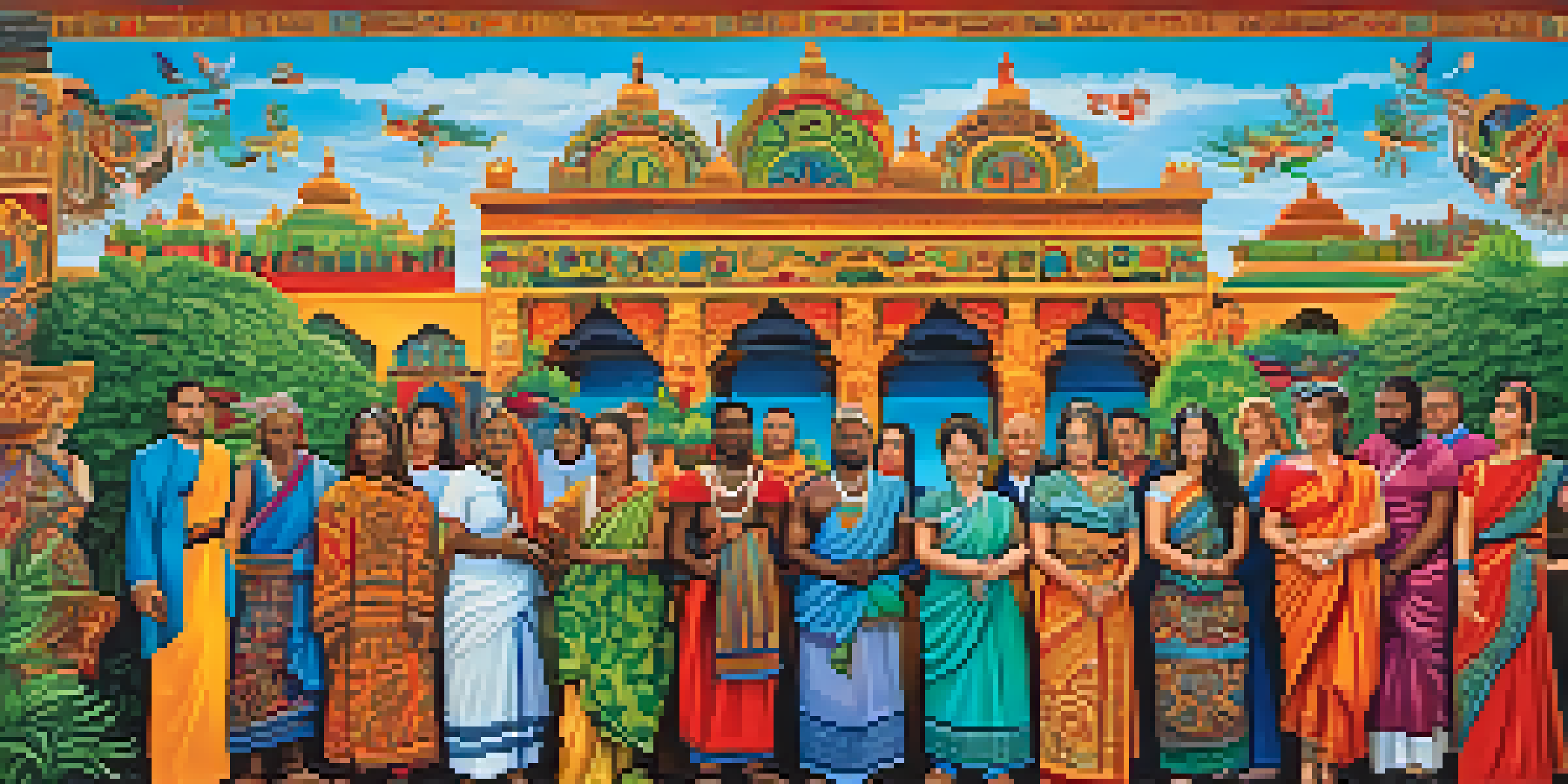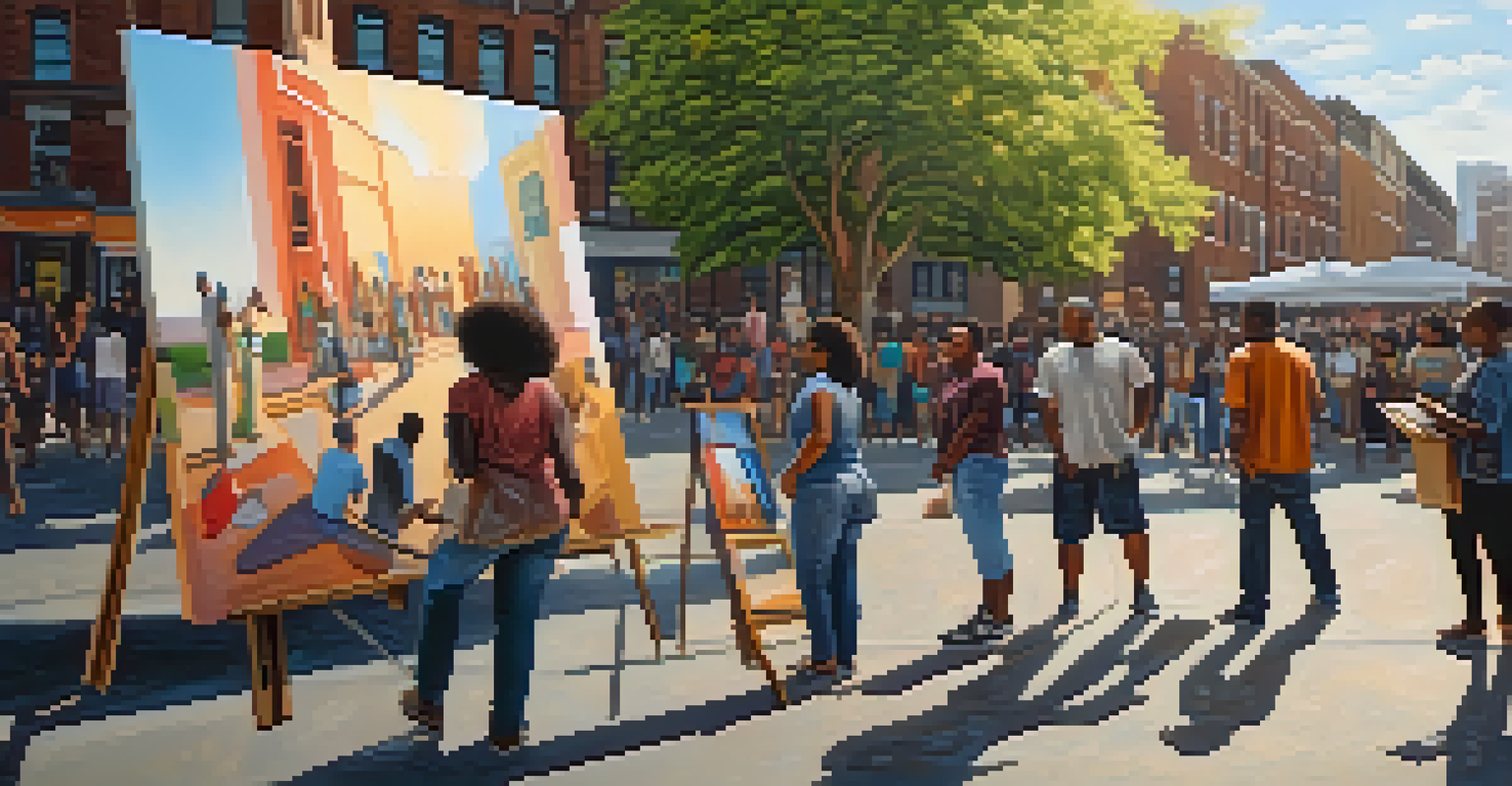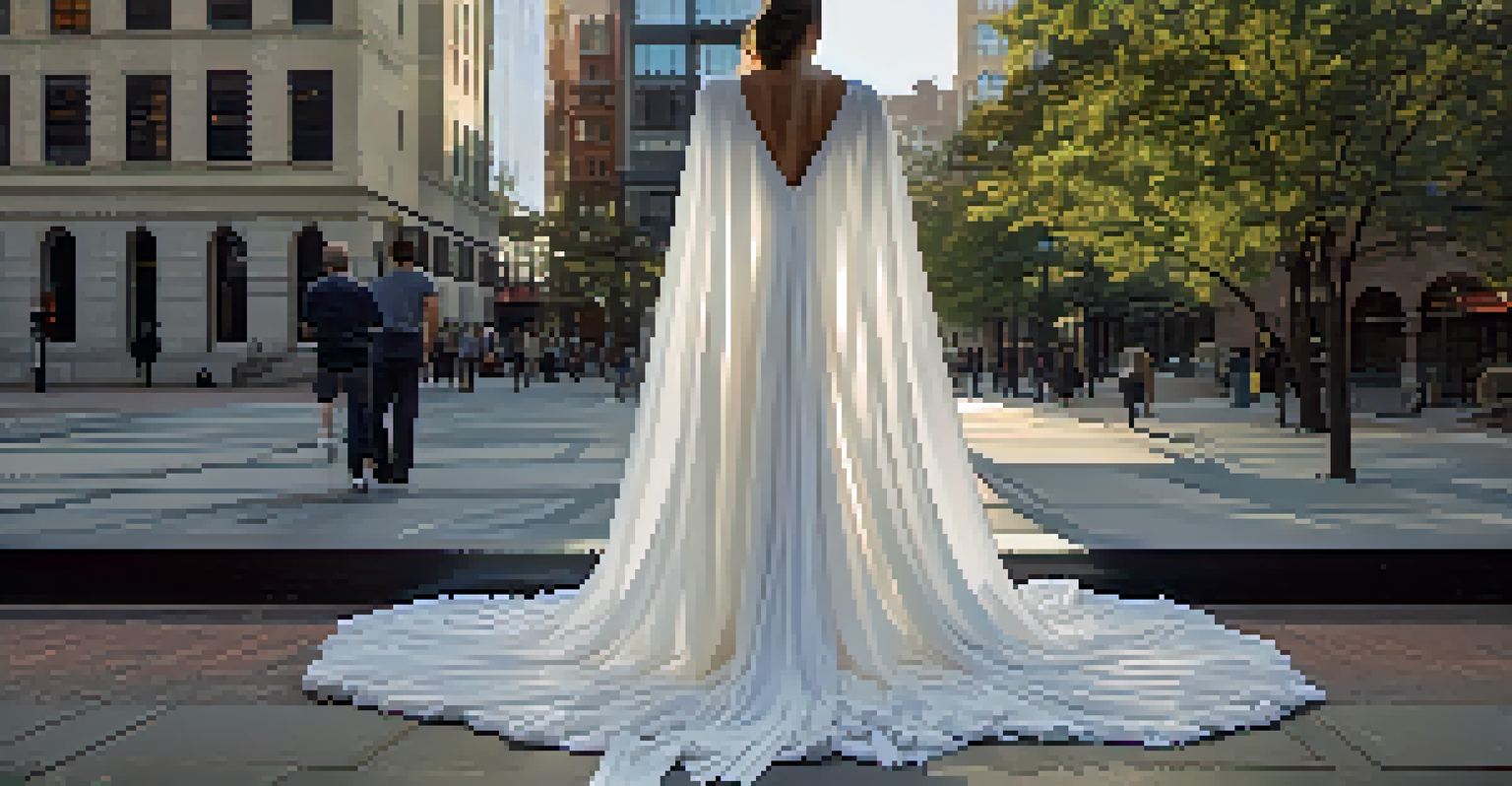Art and Activism: The Voice of Social Change in LA's Scene

Understanding the Intersection of Art and Activism
Art and activism have long been intertwined, creating a powerful conduit for social change. In Los Angeles, this relationship has blossomed into a vibrant movement where creativity meets advocacy. Artists use their talents to shine a light on pressing social issues, making their messages resonate with a broader audience.
Art is not a mirror to hold up to society, but a hammer with which to shape it.
For many, art serves as a medium through which complex ideas can be distilled into relatable narratives. Whether it’s through murals, performances, or installations, artists in LA are crafting stories that speak to the heart of social struggles— from racial inequality to climate change. This ability to communicate important messages in an engaging way is what makes this intersection so compelling.
Moreover, the impact of art in activism is not just about awareness; it often incites action. When viewers connect emotionally with a piece, they’re more likely to engage with the cause it represents. Thus, in LA, art becomes not only a reflection of society but also a catalyst for change.
The Role of Community in Activist Art
Community plays a crucial role in the creation and reception of activist art in Los Angeles. Many artists collaborate with local organizations and residents to ensure that their work genuinely reflects the voices and struggles of those directly affected by social issues. This grassroots approach fosters a sense of ownership and pride within the community.

For instance, projects like the 'Los Angeles Mural Project' involve local artists working with community members to create murals that celebrate cultural identity and address social injustices. These collaborative efforts not only beautify the neighborhood but also serve as a reminder of the power of collective action. By integrating community input, the art becomes a true representation of shared experiences.
Art Drives Social Change
In Los Angeles, art serves as a powerful medium for addressing social issues and inspiring community engagement.
Additionally, community-driven art often sparks conversations that lead to further activism. When people see their stories represented in art, it encourages dialogue and mobilization around issues that matter to them. This synergy between artists and their communities amplifies the impact of the messages being conveyed.
Iconic Examples of Activist Art in LA
Los Angeles is home to a plethora of iconic artworks that serve as powerful symbols of activism. One notable example is the 'Rodney King Mural' by the artist Kent Twitchell, which addresses police brutality and racial tensions in the city. This mural not only memorializes a pivotal moment in history but also continues to inspire conversations about justice and reform.
The role of the artist is to make the revolution irresistible.
Another significant piece is the large-scale installation 'The White Dress Project,' which addresses the issue of gun violence. This artwork, featuring a haunting white dress adorned with names of gun violence victims, brings a visceral connection to the statistics. By transforming a simple garment into a poignant reminder, the artist invites viewers to reflect deeply on the implications of their actions and the societal structures that allow violence to persist.
These examples illustrate how art can become a rallying point for social movements. They remind us that creativity can be a potent tool for advocacy, inspiring both local and global audiences to take action.
Digital Platforms: Expanding the Reach of Activism
In today's digital age, artists in Los Angeles are leveraging social media and online platforms to amplify their activism. By sharing their work online, they can reach a global audience, spreading awareness about social issues far beyond the local context. This digital presence helps to create a sense of solidarity among activists worldwide.
Platforms like Instagram and TikTok have become vital spaces for artistic expression and activism. Artists can showcase their work, share personal stories, and even organize virtual events that mobilize support. These channels not only facilitate immediate engagement but also foster community building among like-minded individuals across different regions.
Community Shapes Activist Art
Collaboration between artists and local communities ensures that activist art genuinely reflects the voices and struggles of those it aims to represent.
Furthermore, the accessibility of digital art allows for more diverse voices to be heard. Emerging artists who may not have access to traditional gallery spaces can find their platform online, increasing representation in the art world. This democratization of art is crucial in ensuring that all narratives are included in the conversation around social change.
The Challenges of Art as Activism
While art can be a powerful tool for activism, it also faces several challenges. One major hurdle is the risk of co-optation, where commercial interests dilute the original message behind a piece of activist art. When art is commodified, its ability to inspire genuine change can be compromised, turning meaningful messages into mere trends.
Additionally, artists may encounter backlash for their work, particularly when addressing controversial topics. In a city as diverse as Los Angeles, differing opinions can lead to tensions, and artists must navigate these dynamics carefully. Some may face censorship or pushback from those who disagree with their message.
Despite these challenges, many artists remain undeterred. They continue to push boundaries and engage with difficult topics, understanding that true change often comes from discomfort. By confronting issues head-on, they contribute to a more profound dialogue about the social realities we face.
The Future of Art and Activism in LA
As the landscape of social activism continues to evolve, so too does the role of art in these movements. In Los Angeles, the future looks promising, with a new generation of artists emerging who are passionate about social change. These creatives are not only addressing current issues but also envisioning innovative ways to engage their audiences.
Emerging technologies, such as virtual reality and augmented reality, are being explored as new mediums for activist art. These technologies allow for immersive experiences that can evoke powerful emotions and foster a deeper understanding of social issues. As artists experiment with these tools, they are likely to create even more impactful works that resonate with viewers in unprecedented ways.
Digital Platforms Amplify Voices
Social media and online channels allow artists to reach global audiences, democratizing art and promoting diverse narratives in activism.
Ultimately, the future of art and activism in LA will be defined by collaboration and inclusivity. As artists continue to engage with their communities and leverage new platforms, they will drive conversations that inspire action and foster change. The vibrant art scene in Los Angeles is poised to remain a vital part of the social change movement for years to come.
How to Get Involved in Art and Activism
Getting involved in the intersection of art and activism in Los Angeles is easier than you might think! One way to start is by attending local art exhibitions that focus on social issues. Many galleries and community centers host events where artists showcase their work and discuss the messages behind their pieces, providing a great opportunity to learn and engage.
Another avenue is to volunteer with organizations that support activist artists or promote social change through the arts. Whether it’s helping with community art projects or participating in workshops, there are numerous ways to contribute your time and skills. These experiences not only enrich your understanding but also connect you with others who share your passion for making a difference.

Lastly, consider using your own creativity to advocate for causes you care about. Whether you're a painter, writer, or performer, your unique perspective can contribute to the larger conversation. By sharing your work on social media or collaborating with local organizations, you can amplify your voice and inspire others to join the movement for social change.